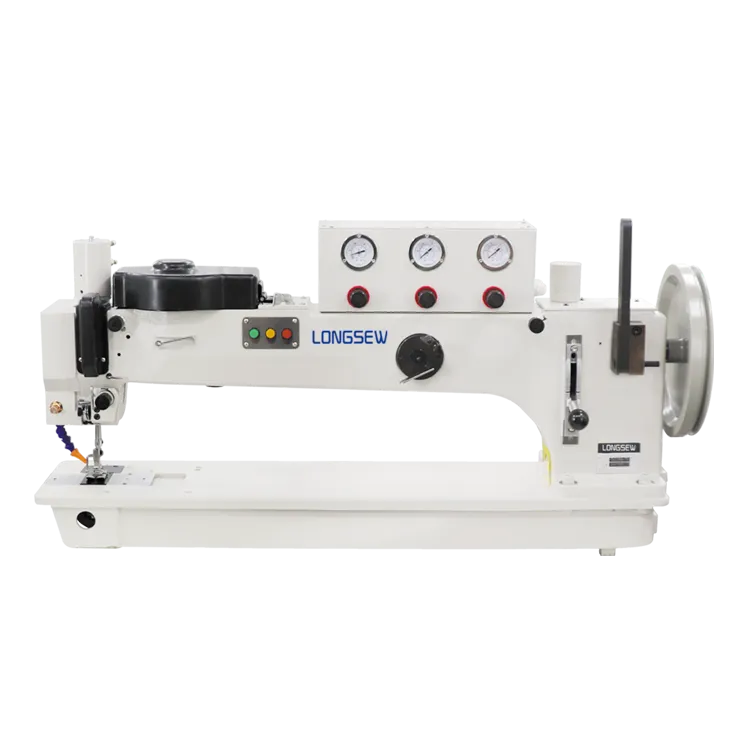Techniques for Efficient Double Needle Threading in Sewing Projects
Understanding Double Needle Threading A Comprehensive Guide
Double needle threading is a technique commonly used in sewing and embroidery that involves the use of two needles, each threaded with its own thread, to create parallel rows of stitching. This method not only enhances the visual appeal of a project but also increases durability, making it particularly popular for hemming garments, stitching down quilt layers, and adding decorative elements to fabric. In this article, we will explore the mechanics of double needle threading, its applications, and tips for successful execution.
Mechanics of Double Needle Threading
At its core, double needle threading employs two needles that are inserted into a single sewing machine needle position. The needles are typically spaced apart by a standard distance, such as 1/4 inch or 3/8 inch, though specialized needles with varying widths are also available. This configuration allows for the creation of two rows of stitches simultaneously, which can be straight or zigzag depending on the sewing machine settings.
The threading process is slightly more complicated than with a single needle. First, the needles must be properly inserted into the needle holder of the machine. Once in place, each needle is threaded individually, ensuring that both threads pass through the machine’s tension disks and through the same thread path. The top threads are then guided down the machine to meet the bobbin thread below, completing the setup. It's essential to adjust the tension settings appropriately since each thread must move smoothly without causing puckering or skipping stitches.
Applications of Double Needle Threading
Double needle threading is versatile and can be utilized across various sewing projects. One of the most common applications is in garment construction, particularly for hemming. The technique creates a professional-looking finish on the edges of knit fabrics, allowing for a stretchy yet secure hem that can withstand everyday wear and tear.
In quilting, double needle threading is often used to sew down quilt layers, providing a stronger bond between the fabric pieces
. This method can also introduce decorative designs to quilts, as the additional rows of stitching can enhance the overall aesthetic of the piece.double needle threading

Additionally, double needle threading is widely used in sportswear and activewear sewing. The ability to stretch the fabric while maintaining seam integrity is crucial in performance garments, making this stitching technique ideal for manufacturing athletic apparel.
Tips for Successful Double Needle Threading
To achieve the best results with double needle threading, consider the following tips
1. Choose the Right Needle Select a double needle that matches the fabric type and desired distance between stitches. Additionally, ensure that the needle size suits the thread weight. 2. Adjust Tension Carefully Improper tension can lead to skipped stitches or puckered fabric. It's advisable to conduct a test on a scrap piece of fabric to fine-tune the tension settings before starting on the final project.
3. Use Appropriate Thread Use a thread that complements your fabric choice. For stretch fabrics, a stretch or zigzag thread can yield better results.
4. Keep the Fabric Flat When sewing, maintain a steady pace and ensure that the fabric is not being pulled or distorted, as this can affect stitch consistency.
In conclusion, double needle threading is an essential technique for both novice and experienced sewers. By understanding its mechanics, exploring its applications, and following best practices, you can enhance your sewing projects and achieve professional-quality results. Whether you’re hemming a dress or quilting a blanket, mastering this technique will undoubtedly elevate your sewing skills.
-
Heavy Duty Leather Sewing Machine: A Must-Have for Professional LeatherworkNewsMay.28,2025
-
Leather Sewing Machine: Essential for High-Quality LeathercraftNewsMay.28,2025
-
Extra Heavy Duty Sewing Machine for Premium Leather ApplicationsNewsMay.28,2025
-
Walking Foot Cylinder Arm Sewing Machine: Precision and Power CombinedNewsMay.28,2025
-
Industrial Cylinder Arm Sewing Machine: Engineered for High-Performance StitchingNewsMay.28,2025
-
Cylinder Bed Sewing Machine: A Powerful Solution for Precision StitchingNewsMay.28,2025
-
Zigzag Sewing MachineNewsMay.12,2025





























